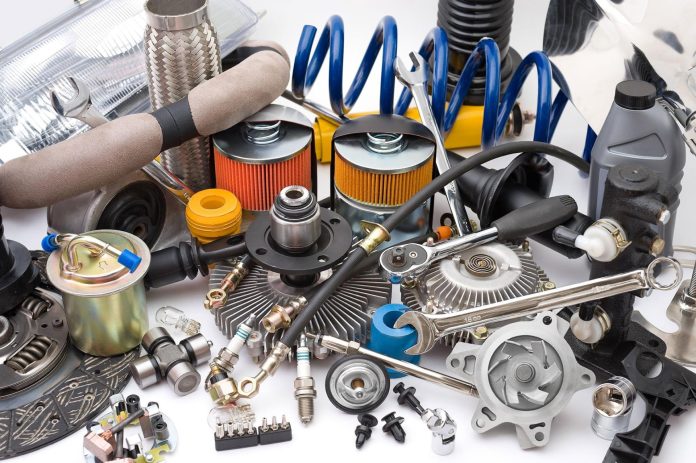Dear Readers according to market study Principal manufacturer of renowned Brands can play a vital role in promoting exports of pre-established vendor parts to other countries world engaged in same brand range, especially during a local economic recession.
However, it’s essential to acknowledge that expanding into new markets during an economic downturn also comes with risks. Economic uncertainties, currency fluctuations, and regulatory challenges may pose obstacles that need to be carefully considered and managed. Nonetheless, with a well-thought-out strategy and leveraging the advantages of an established brand and vendor setup, the principal manufacturer usually play a vital role in promoting exports and expanding its reach during a local economic recession.
Here’s how:
- Brand Recognition: A renowned brand carries significant weight in the global market. Consumers in other parts of the world may have a higher level of trust in products associated with a well-known brand, which can make it easier to penetrate new markets and gain acceptance.The brand recognition can be leveraged to attract potential buyers in other parts of the world, even during an economic downturn, as consumers may seek trusted products from well-known brands.
- Quality Assurance: The Principal manufacturer can vouch for the quality and reliability of the vendor’s setup, ensuring that the assembled vehicles meet international standards and customer expectations. This quality assurance can be a significant selling point when targeting new markets.
- Economies of Scale: During an economic recession, the Principal manufacturer may experience reduced domestic demand. Exporting to other parts of the world can help utilize excess production capacity, allowing the manufacturer to benefit from economies of scale and maintain profitability.Economic Incentives: Governments in some countries may offer incentives to foreign companies to set up manufacturing operations in their territories, especially if it leads to job creation and technology transfer. These incentives can help offset some of the risks associated with expanding during an economic downturn.Boosting Local Economy: Exporting vehicles / parts from the vendor setup to other parts of the world can provide a positive impact on the local economy. It can create additional jobs and support the businesses within the supply chain, contributing to the economic recovery of the region where the principal manufacturer is located.
- Diversification of Revenue: Expanding to new markets reduces dependence on the local economy. Diversifying revenue streams can provide stability and a buffer against economic downturns in a specific region.
- Support to Vendors: The Principal manufacturer can provide technical assistance, training, and support to the vendors involved in assembling vehicles for export. This collaboration strengthens the vendor’s capabilities and increases their competitiveness on the global stage.Utilizing Existing Vendor Setup: The principal manufacturer can use its pre-established vendor setup to assemble similar range of vehicles in other regions. This setup likely includes a network of suppliers, manufacturers, and distribution channels that are already in place, which can significantly reduce the time and cost required to start operations in new locations.
- Government Incentives: During a recession, governments may offer incentives for companies to boost exports and strengthen the country’s balance of trade. The Principal manufacturer can leverage these incentives to make exporting more financially attractive.
- Market Research and Access: The Principal manufacturer likely has extensive market research and distribution networks in various regions. Utilizing this knowledge can help identify promising markets and establish distribution channels more efficiently.Exporting to Emerging Markets: During a local economic recession, demand for vehicles in the manufacturer’s home market may decrease. However, in other parts of the world, particularly in emerging markets, there could still be demand for vehicles. By tapping into these regions, the manufacturer can diversify its revenue streams and reduce its dependence on the domestic market.
- Building Alliances: The Principal manufacturer can collaborate with other organizations, such as trade associations or government bodies, to form alliances and promote the export of locally assembled vehicles / parts. This collective effort can have a more substantial impact and improve the chances of success.Long-term Strategy: Expanding into new markets during a local economic recession can be a strategic move for the principal manufacturer. It allows them to gain a foothold in new regions, which can prove beneficial once the economic situation stabilizes and demand increase.
Automobile related exports from Asia:Asia is a significant player in the global automotive industry, with several countries being major exporters of vehicles and automotive parts. Some of the prominent Asian countries with significant automobile exports include:
- Japan: Historically, Japan has been one of the leading exporters of automobiles and automotive components, with major brands like Toyota, Honda, Nissan, and others dominating the global market.
- South Korea: South Korean brands like Hyundai and Kia have gained popularity worldwide, contributing to the country’s strong export figures in the automotive sector.
- China: China has become the world’s largest automobile market and has also expanded its export presence in recent years. Many international automakers have manufacturing facilities in China, leading to increased export figures.
- India: India is known for its competitive automotive manufacturing sector, and brands like Maruti Suzuki and Tata Motors have been exporting vehicles and components to various countries.
- Thailand: Thailand has emerged as a major production and export hub for automobiles and automotive parts in Southeast Asia.
This exclusive article has been written by @Aqeel Bashir and published in Automark Magazine’s printed edition of August-2023
